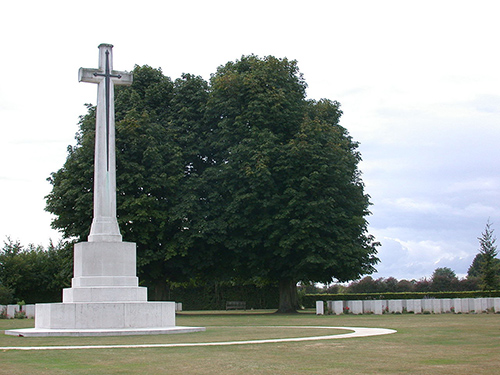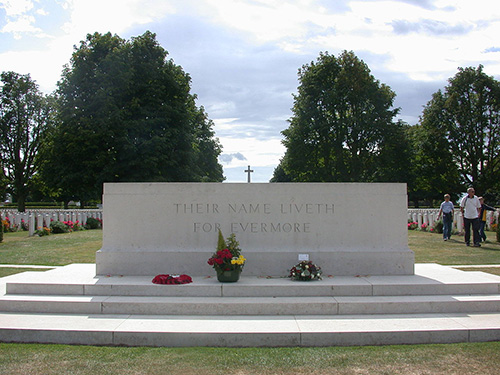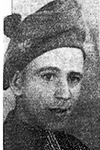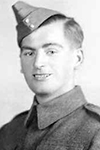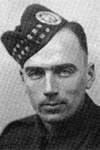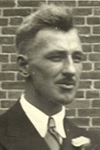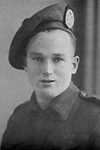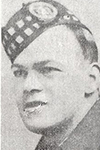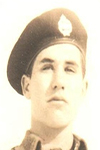Canadian War Cemetery Bretteville-sur-Laize
On 23 July 1944, the Headquarters of the First Canadian Army became operational under the command of General Harry Crerar. Though Canadian in name, this army quickly took on an international character. Alongside its core formations—the 2nd and 3rd Canadian Infantry Divisions and the 4th Canadian Armoured Division—it included the 1st Polish Armoured Division, British corps, and at various times American, Belgian, and Dutch units.
As the Americans advanced northward from the south of Normandy, encircling German forces in what became known as the Falaise Pocket, Crerar’s army was ordered to strike south toward Falaise to close the gap. The task fell to Lieutenant‑General Guy Simonds, commanding the 2nd Canadian Corps, who devised a bold plan. On the night of 7 August 1944, Canadian infantry were carried forward in armoured personnel carriers—nicknamed “Kangaroos”—while tanks spearheaded and followed the assault. The attack began just before midnight, preceded by a massive air bombardment marked by red and green flares fired by the artillery.
The Canadians achieved initial success, overrunning the German forward defenses and retaking the ridge at Verrières, where so many had fallen in July. Yet the momentum faltered in the face of fierce German resistance and tragic errors in Allied bombing, which inflicted casualties on Canadian troops. Recognizing the urgency of linking with the Americans, Simonds ordered a renewed assault. This time, on 14–16 August, the attack went in by daylight, with smoke screens replacing the cover of darkness. Again, Allied bombs fell short, but the Canadians pressed on. On 16 August 1944, Falaise was finally taken, sealing the southern hinge of the pocket and ensuring the destruction of much of the German Seventh Army.
The cost of these battles was immense. Thousands of Canadians were killed in the fighting south of Caen, around Saint‑André‑sur‑Orne, and in the struggle to close the Falaise Gap. Their graves are gathered in the Bretteville‑sur‑Laize Canadian War Cemetery, established in 1944 as a concentration cemetery as a permanent resting place. France granted Canada a perpetual concession to the land, ensuring it would remain forever Canadian soil. It was formally completed and unveiled in the early 1950s.
The cemetery contains 2,958 burials, of which 2,782 are Canadian. Among them, 87 remain unidentified. The remainder include 80 British, 4 Australians, and one each from France and New Zealand. Almost every unit of the II Canadian Corps is represented here, reflecting the scale of the fighting in July and August 1944. Earlier Canadian casualties from June and early July are buried further north at the Bény‑sur‑Mer Canadian War Cemetery near Juno Beach.
Among those buried here are victims of a large-scale massacre of Canadian prisoners of war, committed by members of the Waffen-SS.
Description of the ceemtery:
The Bretteville‑sur‑Laize Canadian War Cemetery was designed in the tradition established by Sir Edwin Lutyens and Sir Reginald Blomfield for the Commonwealth War Graves Commission after the First World War, and it reflects the same solemn harmony found in other Canadian cemeteries in Normandy.
Set on a slight plateau overlooking the surrounding farmland, its central axis runs from a formal stone gateway to the far end, where the Cross of Sacrifice rises with its bronze sword. Near the entrance, the Stone of Remembrance rests on a granite platform, inscribed with the words “Their Name Liveth For Evermore,” facing the cross across the rows of graves.
The headstones, carved from white Portland stone and arranged in long, even lines, are grouped by unit but make no distinction of rank. Each bears the soldier’s name, regiment, and date of death where known, with many carrying personal inscriptions chosen by families; those of the unidentified read simply, “A Soldier of the Second World War – Known Unto God.”
The cemetery is enclosed by low stone walls and softened by lawns, roses, and seasonal flowers, with trees providing shade and enclosure. Its horticultural design evokes both a garden and a place of mourning, a landscape where the peace of today contrasts with the violence of the battlefield it once was.
Do you have more information about this location? Inform us!
Source
- Text: TracesofWar
- Photos: RussellMcKenzie & Annette Jans
Nearby
Point of interest
- Site Destruction Tiger of Michael Wittmann - Cintheaux
- Information Panels Operation Goodwood - Bourguébus
Monument
- Private Gerard Doré Memorial - Cintheaux
- Memorial Canadian and Polish Forces - Cintheaux
- War Memorial Bretteville-sur-Laize - Bretteville-sur-Laize
